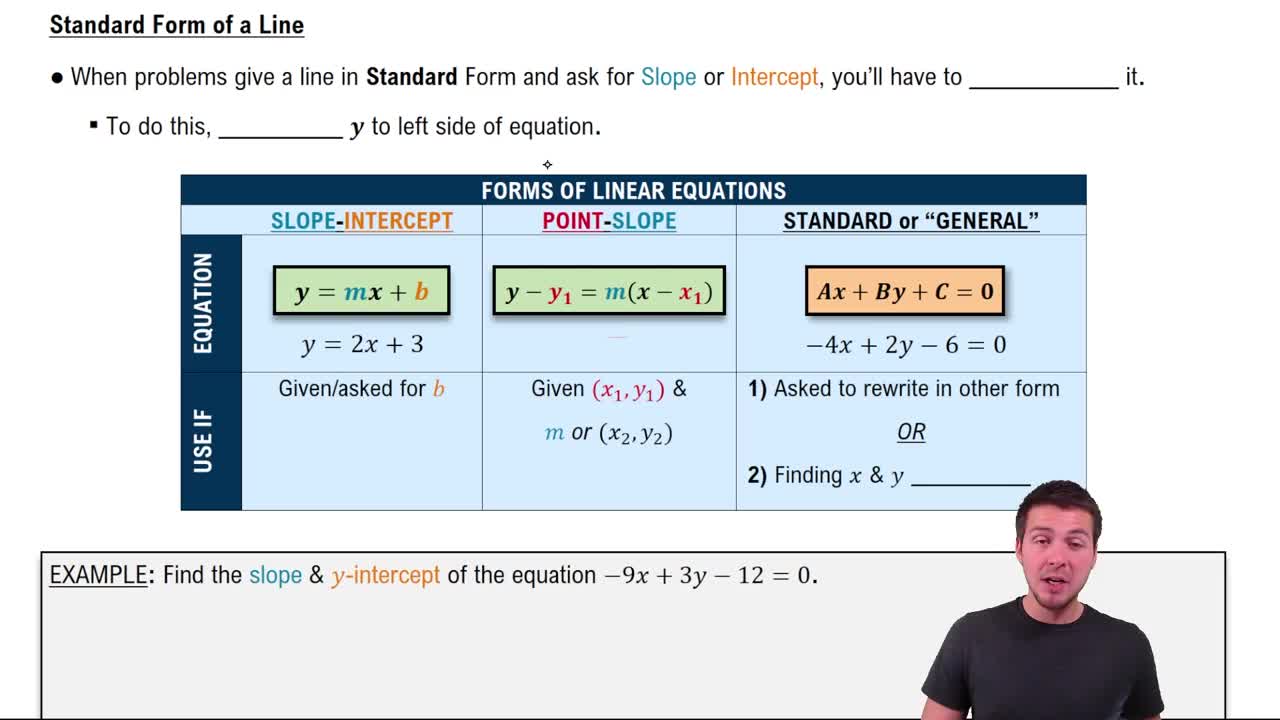Here are the essential concepts you must grasp in order to answer the question correctly.
Linear Equations
Linear equations are mathematical statements that describe a straight line when graphed on a coordinate plane. They can be expressed in various forms, including slope-intercept form (y = mx + b) and standard form (Ax + By = C). Understanding how to derive these equations from a graph is essential for solving problems involving systems of equations.
Recommended video:
Categorizing Linear Equations
Graphing Systems of Equations
Graphing systems of equations involves plotting two or more linear equations on the same coordinate plane to find their points of intersection. The intersection points represent the solutions to the system, indicating where the equations are satisfied simultaneously. This visual approach helps in understanding the relationships between the equations.
Recommended video:
Introduction to Systems of Linear Equations
Standard Form of Linear Equations
The standard form of a linear equation is expressed as Ax + By = C, where A, B, and C are integers, and A should be non-negative. This form is particularly useful for identifying intercepts and for solving systems of equations algebraically. Converting equations from slope-intercept or point-slope forms to standard form is a common task in algebra.
Recommended video:
Standard Form of Line Equations

 Verified step by step guidance
Verified step by step guidance Verified video answer for a similar problem:
Verified video answer for a similar problem:



 4:27m
4:27m